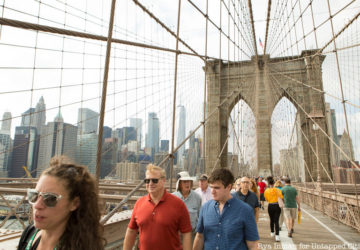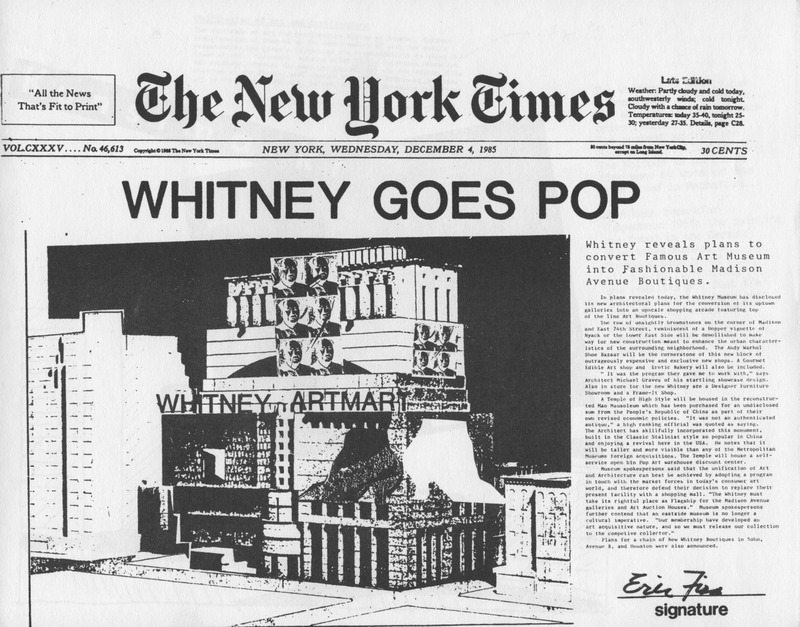 Before Whitney submission by Eric Fiss (New York, NY), 1985. “Whitney Goes Pop”
Before Whitney submission by Eric Fiss (New York, NY), 1985. “Whitney Goes Pop”
This past year, the Whitney Museum reopened in a new Renzo Piano-designed museum in the Meatpacking District, moving from its smaller space on the Upper East Side, the modernist building designed by Marcel Breuer and Hamilton P. Smith from 1963 to 1966. Space had been an issue from almost the beginning, with the Whitney opening outposts on Water Street, on Park Avenue, in Connecticut and other New York City office buildings over the decades.
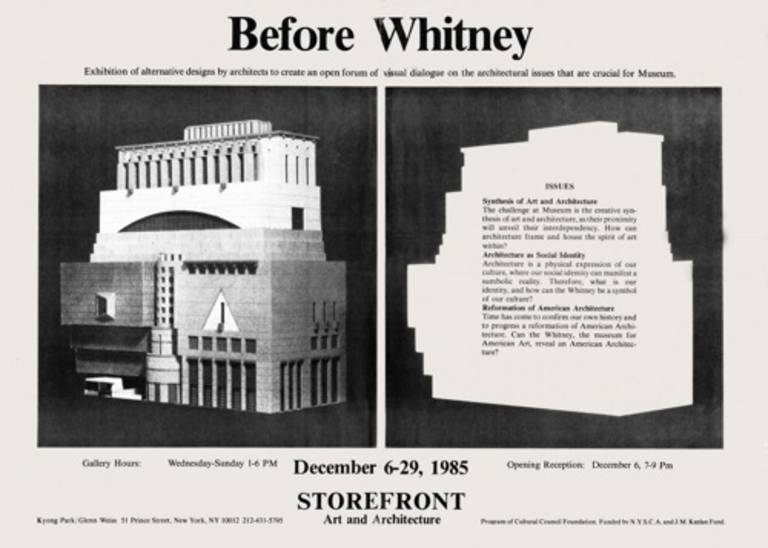 Michael Graves proposal for the Whitney Musuem expansion, at left
Michael Graves proposal for the Whitney Musuem expansion, at left
In 1985 the Whitney Museum for American Art proposed a 10-story, $37.5 million building to serve as an addition to the museum. Designed by Michael Graves, the expansion was intended to give the Whitney the space to comprehensively display 20th century American art, with specific galleries dedicated to artists such as Edward Hopper, Georgia O’Keeffe, and Alexander Calder. The design was immediately divisive, causing debate largely over the relationship between Graves’ proposal and the existing Breuer building.
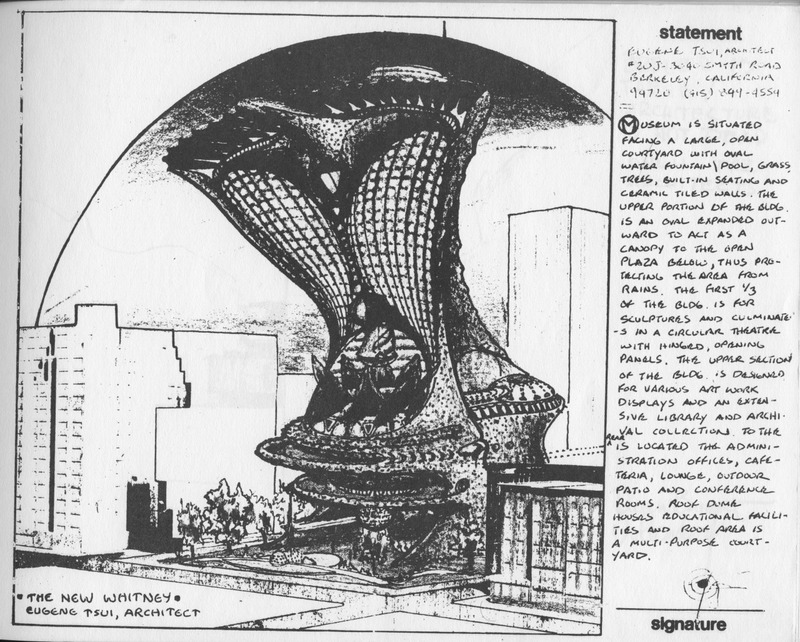 Submission by Eugene Tsui (Berkeley, CA), 1985. “The New Whitney”
Submission by Eugene Tsui (Berkeley, CA), 1985. “The New Whitney”
Six months after the Whitney announced the expansion plans, Storefront for Art and Architecture held Before Whitney, an exhibition of alternative designs. The exhibition invited artists and architects to investigate the relationship between architecture and museums through three main issues.
1. the Unification of Art and Architecture
2. Architecture as a Social Identity
3. the Reformation of American Architecture
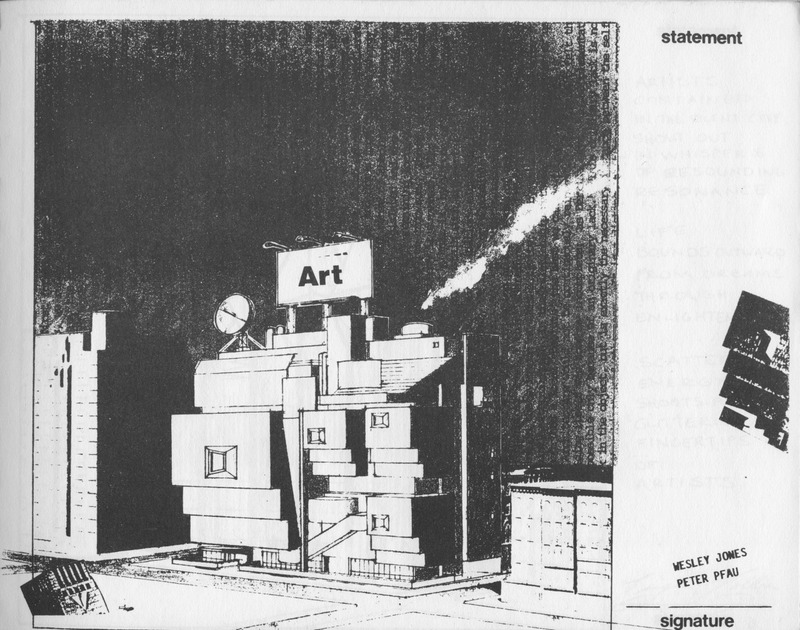 Submission by Wesley Jones and Peter Pfau (San Francisco, CA), 1985.
Submission by Wesley Jones and Peter Pfau (San Francisco, CA), 1985.
Storefront distributed 8 ½” by 11” presentation cards, that erased both the Breuer building and Graves proposal, and asked the participants to fill in the space with comments, suggestions and answers,, creating a visual forum for discussion.The controversial addition presented an opportunity to investigate critical issues relating to the tradition of American architecture and the relationship between art and architecture.
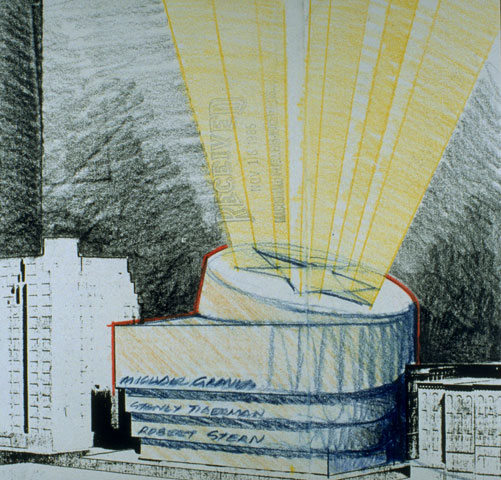 Submission by Donald McDonald (San Francisco, CA), 1985. “TRY IT THE AMERICAN WAY”
Submission by Donald McDonald (San Francisco, CA), 1985. “TRY IT THE AMERICAN WAY”
Among the 70 respondents were Christo, Todd Ayoung, Eugene Tsui and Carolee Schneemann. The proposals addressed the challenge of a museum to creatively synthesize physical structure with the works that are on display. How can architecture frame and house the spirit of the art within, and how could the new design for the Whitney, as the Museum for American Art, reveal a specifically American architecture?
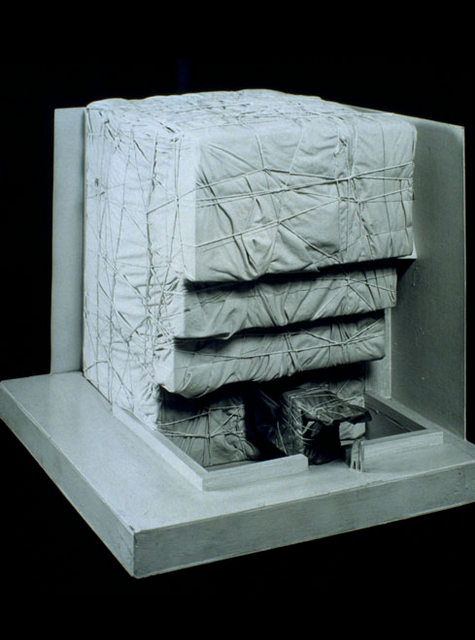 Submission by Christo (New York, NY), 1985. “Whitney Museum of American Art, NYC Wrapped”
Submission by Christo (New York, NY), 1985. “Whitney Museum of American Art, NYC Wrapped”
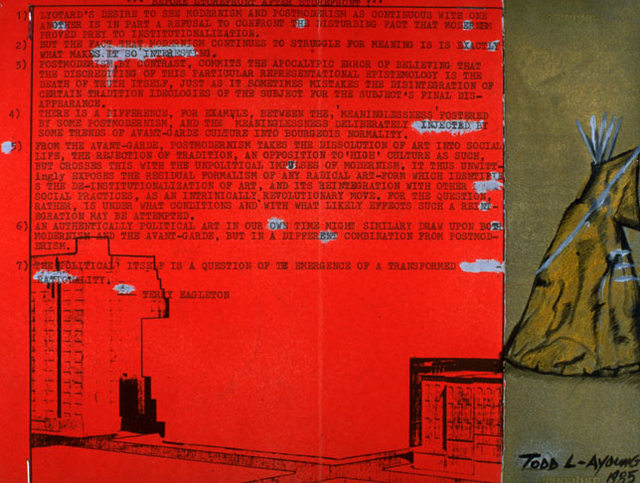 Submission by Todd L-Ayoung (New York, NY), 1985. “…Before Storefront After Storefront…
Submission by Todd L-Ayoung (New York, NY), 1985. “…Before Storefront After Storefront…
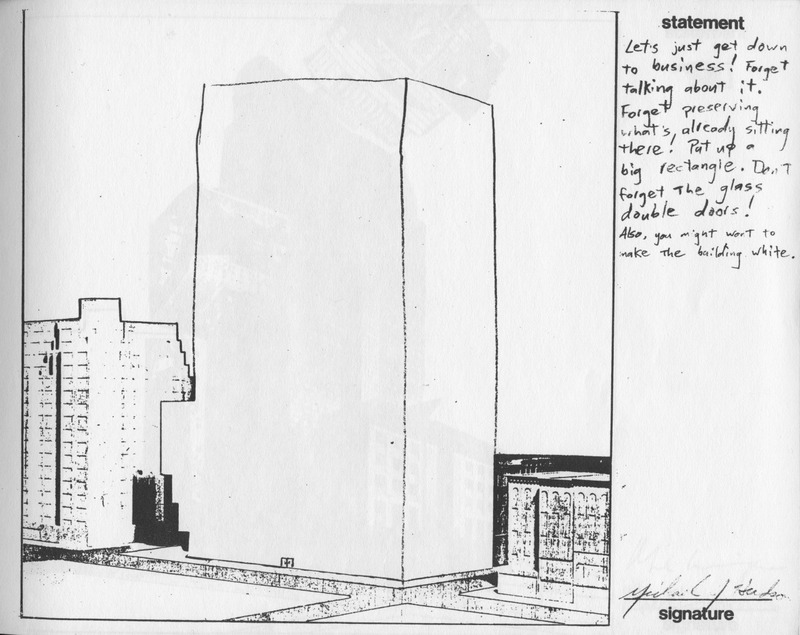 Michael Hudson (San Francisco, CA), 1985.
Michael Hudson (San Francisco, CA), 1985.
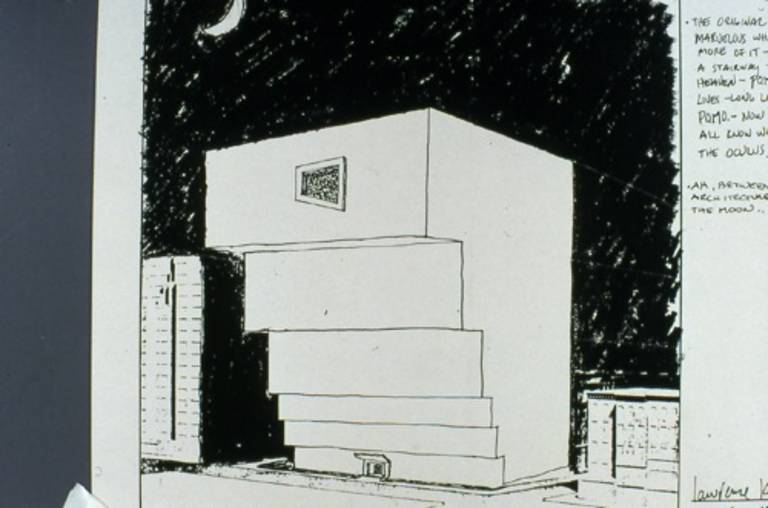
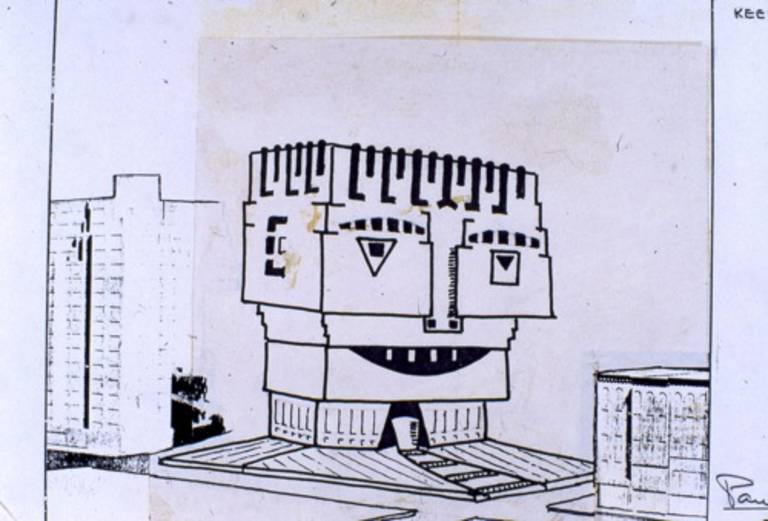
Next, check out 10 outrageous architectural plans for NYC that never came to be and take a look inside the Met Breuer, the Metropolitan Museum of Art’s new modern art outpost in the former Whitney Museum. This article co-written by Anthony Graham, formal archive assistant to the Storefront for Art and Architecture and Michelle Young.


